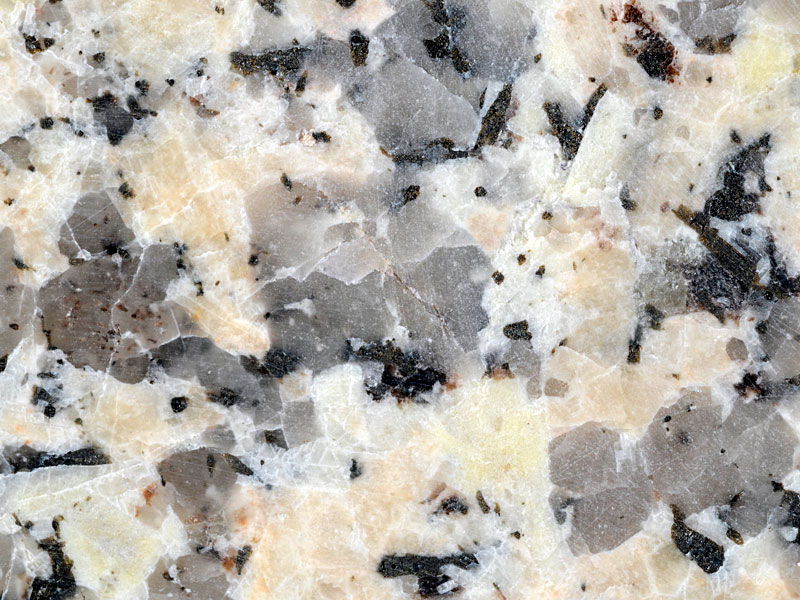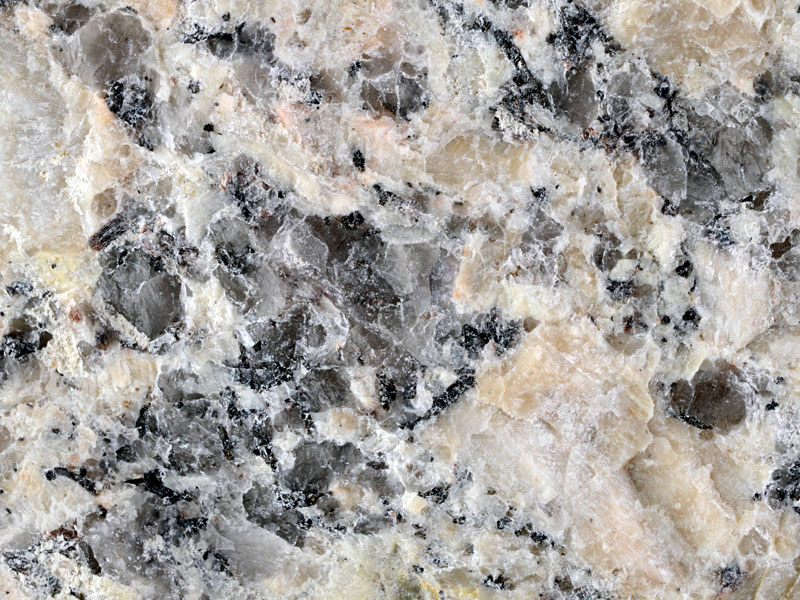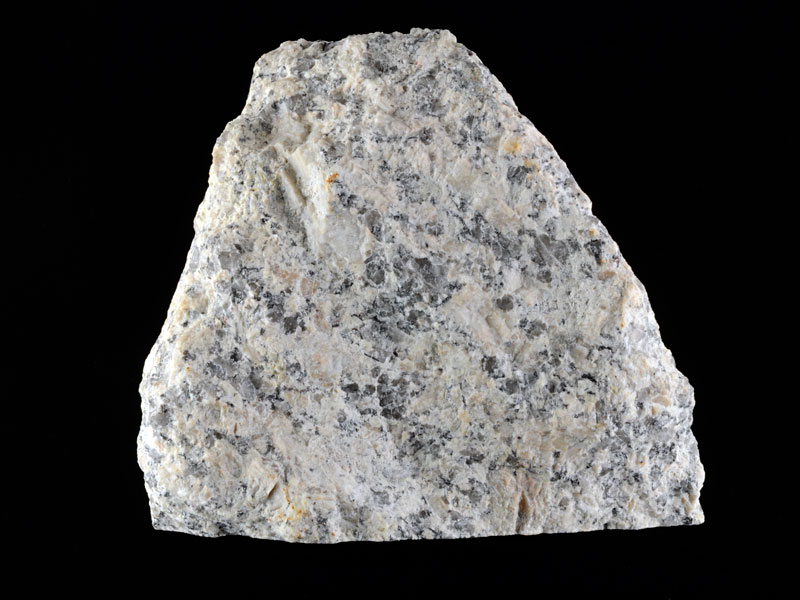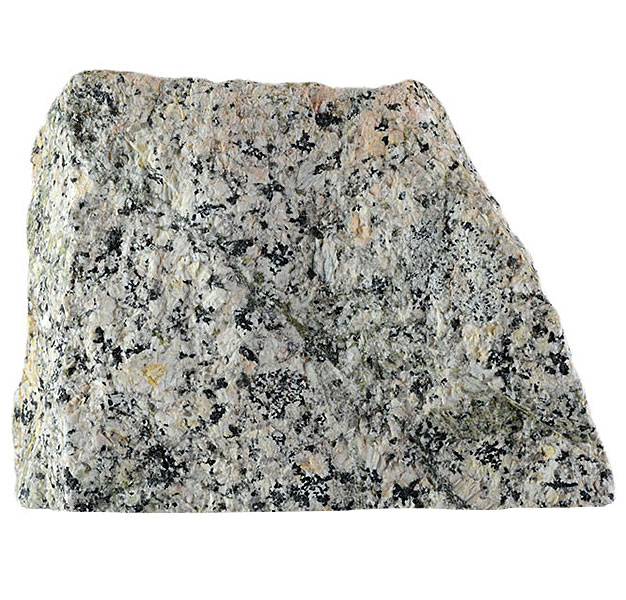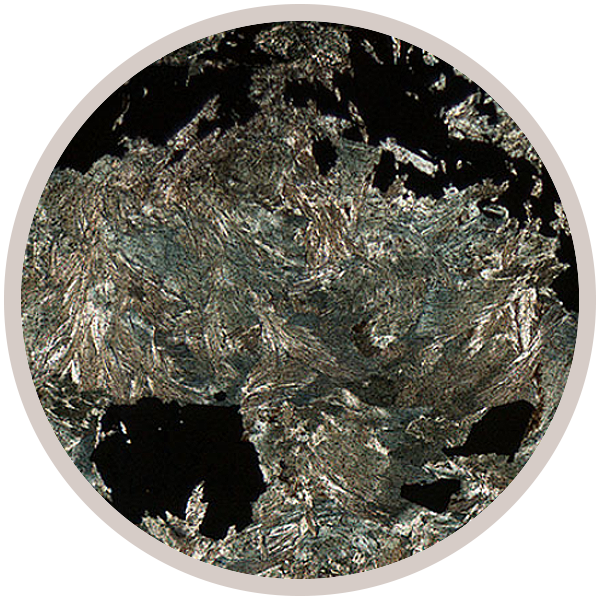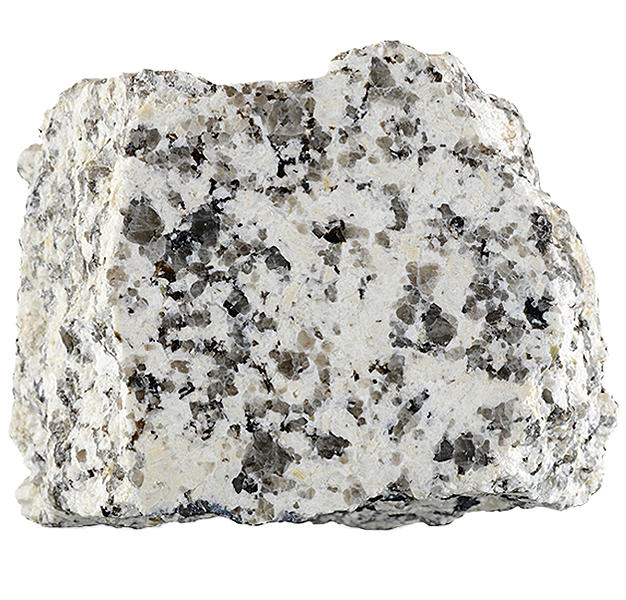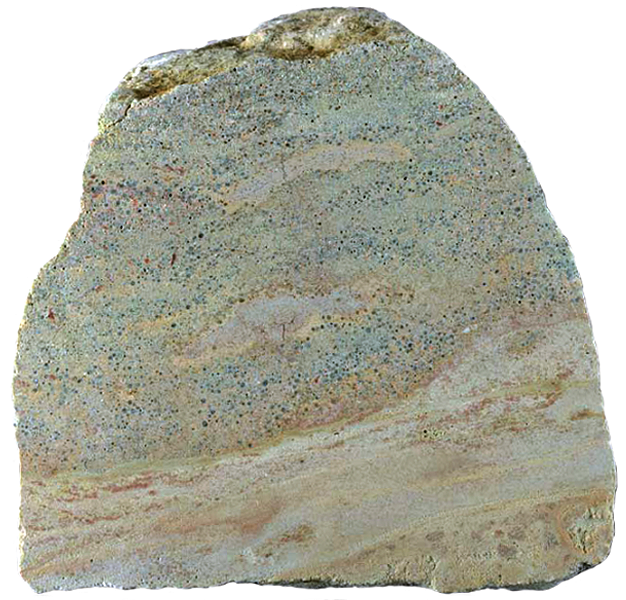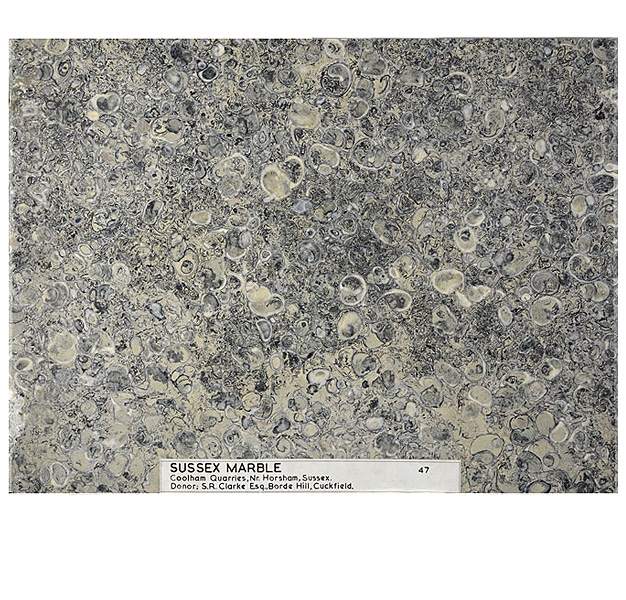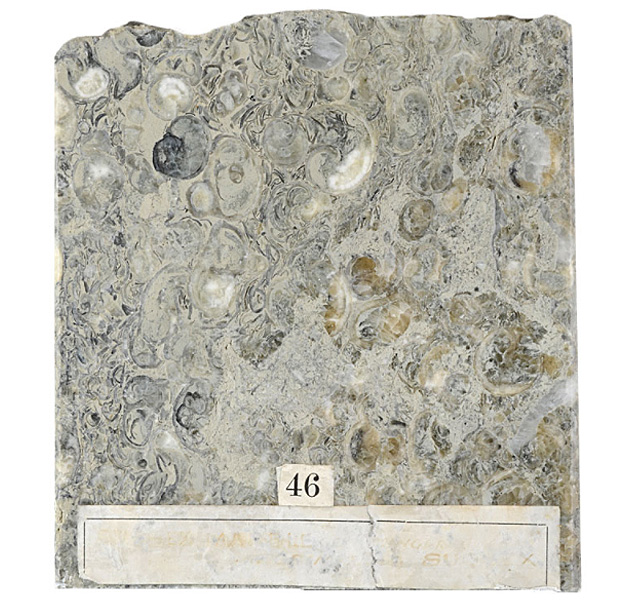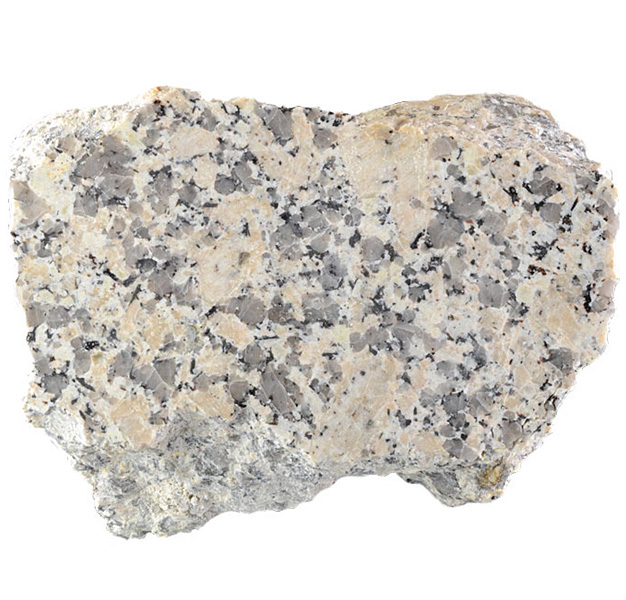
Fact sheet
This altered granite comes from a location within Littlejohn's china clay pit, St Austell, Cornwall. China clay in this area was created while the molten granite was still cooling, when it was fluxed by fluids rich in water, boron and fluorine, attaching the sodium-rich feldspar. Clay is mined in this area by high pressure water hoses and filtering to remove the remaining micas and quartz. Littlejohn's pit has been active since the 1800s and continues to supply fine clays suitable for use in paper making.
In thin section the rock contains altered feldspars and quartz. Small grains of tourmaline and altered biotite with many pleochroic haloes are also present.
The United Kingdom Virtual Microscope (UKVM) collection consists of igneous, sedimentary and metamorphic rocks from around the UK.
It is intended as a teaching resource, helping to tell the story of the common rock types and how they form, and reflecting the history of the UK at the margins of the continent of Europe. The collection is a series of teaching sets, for example igneous rocks from the North Atlantic Igneous Province and SW England; high-temperature metamorphic rocks from Scotland and low-temperature metamorphic rocks from Wales; and sedimentary rocks, including English limestones and sandstones.
